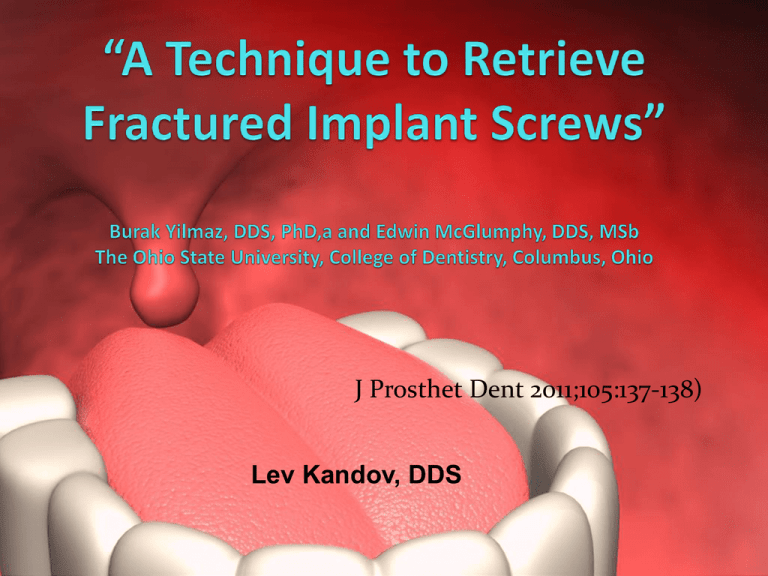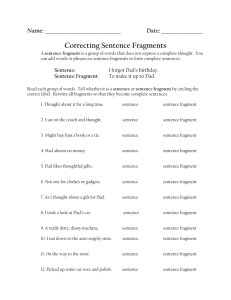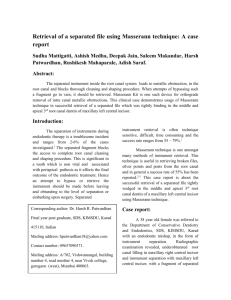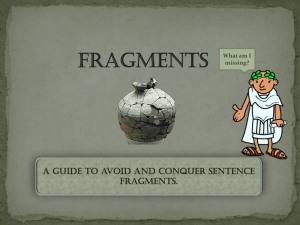“A simplified approach to implant-supported metal
advertisement

J Prosthet Dent 2011;105:137-138) Lev Kandov, DDS Complications Type of Complications With Implants Surgical Bone loss Peri-implant soft tissue complications Mechanical complications Esthetic/phonetic complications Why implant components break 3 Fatigue from biomechanical overload Improper placement techniques Non-passive fit of the suprastructures Manufacturing errors Screw Removal Technique If the screw emerges from the implant, a hemostat can be used for fractured screw removal. If the screws are fractured within the internal threads of the implant A fragment removal instrument is used to retrieve a screw fragment - Fragment Fork by Astra Tech Stainless steel instrument – has a sharp, fork-shaped tip and long shank, which are used in a slow-speed handpiece Time-efficient, cost effective, and can be used with different implant systems. The instrument has 2 different diameters (1 mm and 1.4 mm) Procedure 1. 2. 3. 4. 5. Flush the implant screw hole with an air/water spray, and dry the hole with air for better access and visibility. Evaluate whether the implant threads are damaged. Place the appropriately sized fragment removal instrument in the slow-speed handpiece. Locate the exposed surface of the fragment in the screw hole and center the instrument on the fragment. Apply force to the exposed surface of the fragment with the tip of the instrument to ensure that it is engaged with the fragment. Once the tip of the instrument is engaged with the exposed surface of the fragment, apply reverse torque on the fragment. Work at a slow speed so that the tip of the instrument does not spin on the exposed surface of the fragment, and does not damage the implant threads as the handpiece is activated. After the instrument is engaged with the fragment, little force will be required to retrieve the fragment, provided that the threads have not been damaged previously 1.0mm - Ref No: 22122 1.4mm - Ref No: 22632











